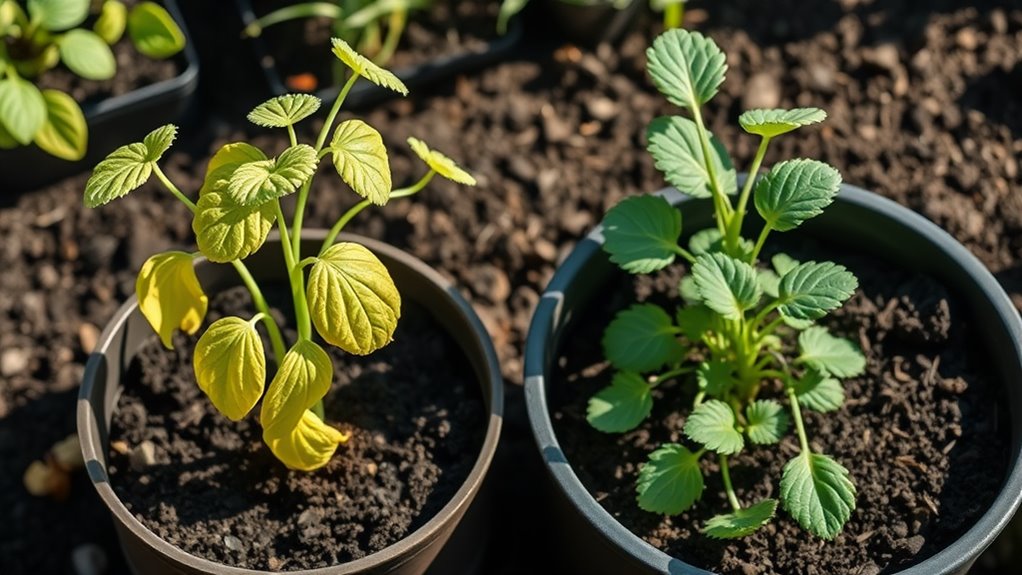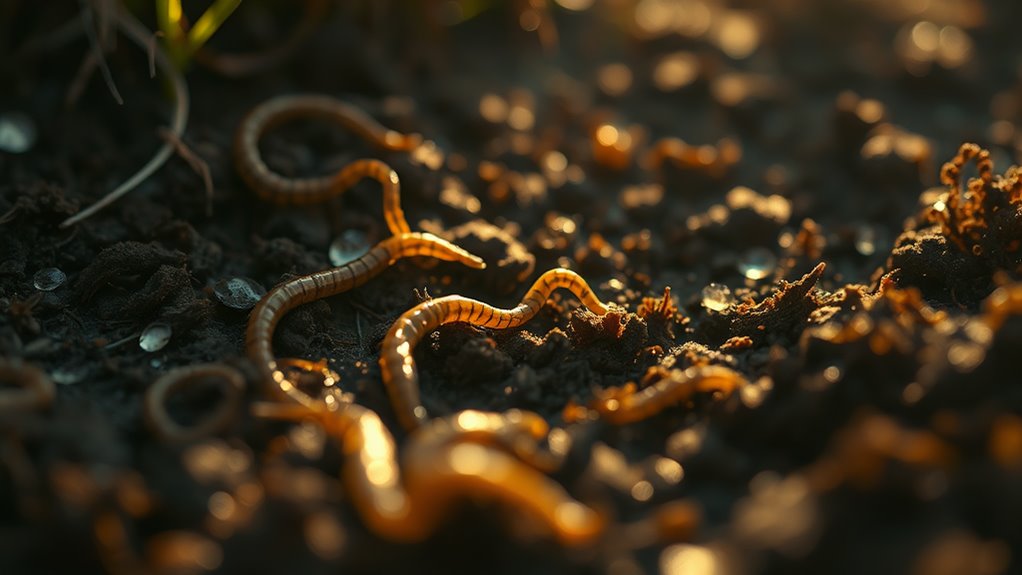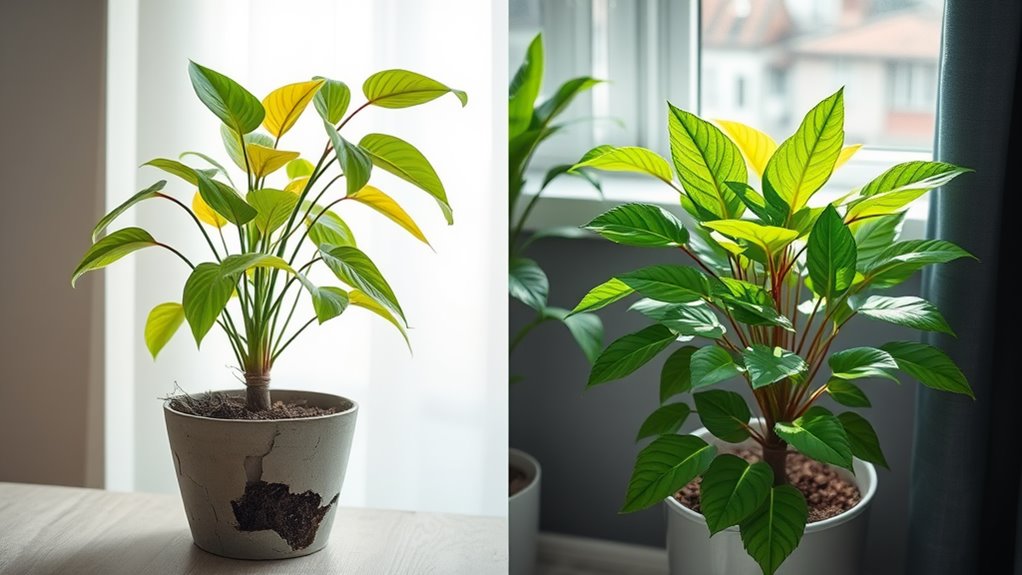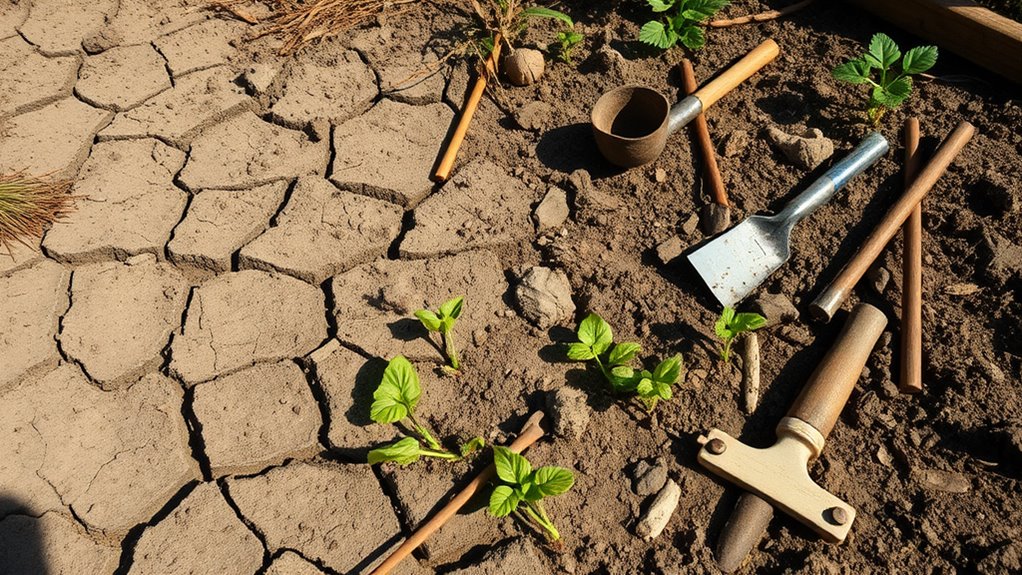What Every Beginner Gardener Gets Wrong – And How to Avoid It
As a beginner gardener, you’re probably overwatering your plants by not checking soil moisture first, which leads to root rot—test the top inch before watering. You’re also ignoring soil health; test it regularly and add organic matter for better nutrients. Planting at the wrong time risks frost damage, so check local dates and prepare soil properly. Neglecting pests invites infestations—inspect leaves and use organic solutions. Overcrowding stunts growth; space plants 12-24 inches apart for air flow. Skipping tool maintenance dulls your tools—clean and sharpen them after use. Master these fixes and discover additional strategies for a thriving garden.
Key Takeaways
- Overwatering plants can cause root rot; check if the top inch of soil is dry before watering.
- Ignoring soil health leads to poor growth; test soil regularly and add organic matter.
- Planting at the wrong time risks frost damage; check local last and first frost dates.
- Overcrowding plants causes competition; space them 12-24 inches apart for optimal growth.
- Neglecting pest management allows infestations; inspect plants regularly and use organic solutions.
Overwatering Your Plants
One of the biggest mistakes you’ll make as a beginner gardener is overwatering your plants, which can suffocate roots and invite diseases like rot.
In your beginner gardening guide, always test soil moisture first—stick your finger in to check if the top inch is dry. You’ll prevent issues by watering only when needed, not on a rigid schedule. If overwatering does happen, try recovery techniques like improving drainage to help revive the affected plant.
Watch for early signs like wilting or yellow leaves, and adjust habits quickly. Use a simple moisture meter for precision.
This practical step ensures your plants thrive without excess water, boosting your beginner gardening success.
Additionally, understanding the signs of overwatering is crucial for maintaining balanced plant health and preventing long-term damage.
Ignoring Soil Health
You often ignore soil health in your garden, which can stunt plant growth, so begin by testing your soil quality to understand its needs. Regular soil testing can also increase crop yields by optimizing nutrient levels for better plant performance.
Once you’ve got the results, add organic matter to boost nutrients and structure.
Then, balance your soil’s pH to create the ideal environment for your plants.
To further enhance your efforts, follow the practical steps for conducting and interpreting soil tests as outlined in soil health strategies.
Test Soil Quality
Although testing soil quality seems straightforward, beginners often skip assessing its overall health, leading to misguided planting decisions. You must test key parameters like pH, nutrients, and texture to match your plants’ needs. Don’t overlook simple methods; they’re crucial for success.
| Test Parameter | Recommended Method |
|---|---|
| pH Level | Use a home soil test kit |
| Nutrient Levels | Send sample to a local lab |
| Soil Texture | Perform a jar or ribbon test |
| Drainage Rate | Conduct a percolation test |
| Compaction | Use a soil probe or dig test |
Add Organic Matter
After testing your soil’s quality, adding organic matter stands out as a key way to boost its fertility and structure.
You’ll enrich the soil by incorporating compost, manure, or leaf mold, which improves texture and water retention. Start with a 2-4 inch layer, then mix it into the topsoil using a garden fork or tiller.
Choose disease-free sources to avoid introducing pests. Apply in spring or fall for best results, and reapply annually to maintain nutrients.
This simple step prevents compaction, supports root development, and helps your plants grow stronger without beginner blunders.
Balance Soil Ph
Balancing your soil’s pH ensures plants thrive by matching their preferred acidity levels. You test it with a home kit and adjust using amendments like lime or sulfur. Ignoring this leads to poor growth, so act early.
| Plant Type | Ideal pH Range | Adjustment Tip |
|---|---|---|
| Tomatoes | 6.0-7.0 | Add lime to raise pH |
| Blueberries | 4.5-5.5 | Apply sulfur to lower |
| Roses | 6.0-6.5 | Mix in compost for balance |
| Ferns | 5.0-6.0 | Use acidic mulches |
You monitor pH annually and retest after changes to keep your garden flourishing without overcomplicating things.
Planting at the Wrong Time
One of the biggest beginner mistakes you make is planting seeds too early or late, ignoring frost date basics that protect your plants from unexpected freezes.
You’ll want to check your local last and first frost dates to time your planting and avoid damage.
Use seasonal timing tips to align your garden with the best weather patterns for healthy growth.
Additionally, incorporating fall planting can help you achieve a thriving autumn harvest by utilizing optimal soil conditions.
Remember that effective soil preparation is crucial for seeds planted at the right time to establish strong roots.
Frost Date Basics
If you’re new to gardening, frost dates mark the typical last spring freeze and first fall freeze in your area, helping you avoid the common mistake of planting too early or late.
Understanding these dates is crucial because frost can damage or kill sensitive plants, so always check local resources like the USDA website or extension services for accurate information.
For instance, wait until after the last spring frost to plant warm-season crops like tomatoes, which can’t tolerate cold snaps.
In fall, time your planting so that cool-season vegetables mature before the first frost hits. This approach protects your plants from unexpected freezes and maximizes your harvest potential.
Seasonal Timing Tips
Building on frost dates, you can’t afford to ignore the broader seasonal calendar, as planting at the wrong time often leads to stunted growth or crop failure. To succeed, match plants to optimal seasons for better yields. Here’s a quick guide:
| Season | Best Plants | Timing Tips |
|---|---|---|
| Spring | Tomatoes, Lettuce | Plant after last frost date |
| Summer | Beans, Corn | Sow in warm, moist soil |
| Fall | Broccoli, Carrots | Start before first frost |
You must research local climate zones and adjust accordingly, ensuring vibrant, healthy gardens through precise timing.
Neglecting Pest Management
While you’re tending to your new garden, overlooking pest management can lead to rapid infestations that damage plants and derail your efforts. Pests such as aphids or caterpillars multiply quickly, so proactive monitoring keeps your greens thriving. Moreover, employing natural methods with easily accessible staples can help ensure a healthy garden ecosystem.
-
Inspect regularly: Check leaves and stems daily for early signs like holes or discoloration to catch problems before they escalate.
-
Choose natural controls: Apply organic solutions like insecticidal soap to target pests without harming beneficial wildlife.
-
Promote balance: Plant companion species, such as marigolds, that repel insects naturally and support a healthy ecosystem.
Additionally, for comprehensive protection, familiarize yourself with the top five pests that commonly threaten plants in gardens.
Overcrowding Your Garden
Overcrowding your garden crams plants too closely together, causing them to compete for sunlight, water, and nutrients, which stunts growth and heightens disease risks. For optimal results, also consider avoiding companion planting issues where certain vegetables negatively impact each other’s growth.
You’ll notice yellowing leaves or stunted stems as early signs, so always check spacing guidelines before planting—most veggies need 12-24 inches apart.
Measure accurately using a tape or grid; this ensures better air flow, reducing mildew and pests.
Plan your layout on paper first, grouping plants by size and needs.
Implementing proper spacing is key to achieving a successful gardening experience.
Skipping Tool Maintenance
Neglecting tool maintenance often leads to rusty, dull equipment that hampers your gardening efforts, making tasks frustrating and inefficient.
Proper maintenance is key to garden efficiency, helping you maximize the benefits of your tools as discussed in related gardening strategies.
You’ll waste time fixing broken tools or dealing with poor performance, which can even damage plants.
-
Clean after every use: Wipe tools with oil to prevent rust and extend their life.
-
Sharpen regularly: Keep blades sharp for clean cuts, reducing plant stress and your effort.
-
Store properly: Hang tools in a dry spot to avoid corrosion and ensure they’re ready when you need them.
By following these practices, you can also uncover hidden surprises that enhance your tools’ readiness for the growing season.





